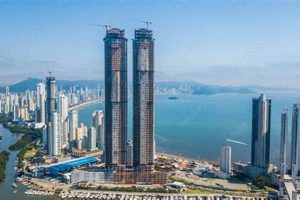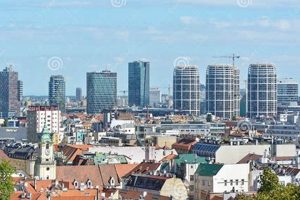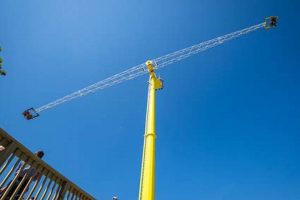Cincinnati is a city proud of its skyline, dotted with impressive skyscrapers that define the city’s urban landscape. These towering structures serve as symbols of Cincinnati’s rich architectural heritage.
The city’s skyline is a testament to the city’s economic growth and prosperity. Skyscrapers have played a vital role in shaping Cincinnati’s identity, contributing to its reputation as a major business and cultural hub in the Midwest. The city’s skyscrapers offer stunning views of the surrounding cityscape, providing a unique perspective on the city’s beauty and vibrancy.
Cincinnati’s skyscrapers are more than just architectural marvels; they are also important economic drivers. These buildings house major corporations, financial institutions, and law firms, providing employment opportunities for thousands of people. The presence of these businesses in Cincinnati’s skyscrapers contributes to the city’s overall economic vitality, attracting new businesses and fostering innovation.
1. Height
The height of Cincinnati’s skyscrapers is a defining characteristic of the city’s skyline. The Great American Tower at Queen City Square, the city’s tallest skyscraper, stands at an impressive 626 feet tall. This height not only makes the tower a prominent landmark but also contributes to the city’s overall economic and cultural vitality.
- Economic impact: The height of Cincinnati’s skyscrapers has a positive impact on the city’s economy. Taller buildings can accommodate more tenants, which can lead to increased business activity and job creation. In addition, the presence of tall skyscrapers can attract businesses to the city, as they can provide a prestigious and convenient location for their operations.
- Cultural impact: The height of Cincinnati’s skyscrapers also has a cultural impact on the city. Tall buildings can create a sense of place and identity for a city. They can also be used to create iconic landmarks that become symbols of the city. In Cincinnati, the Great American Tower at Queen City Square is one of the city’s most recognizable landmarks and is often used to represent the city in marketing and promotional materials.
- Architectural impact: The height of Cincinnati’s skyscrapers has also had a significant impact on the city’s architecture. The city’s skyline is constantly evolving, as new skyscrapers are built and older buildings are renovated. This has led to a mix of architectural styles in the city, from historic buildings to modern skyscrapers.
The height of Cincinnati’s skyscrapers is a key part of the city’s identity. It contributes to the city’s economy, culture, and architecture, making it a vibrant and dynamic place to live and work.
2. Architecture
The architecture of Cincinnati’s skyscrapers is a reflection of the city’s rich history and its dynamic present. From the Art Deco grandeur of the Carew Tower to the sleek modernism of the Great American Tower at Queen City Square, Cincinnati’s skyscrapers represent a wide range of architectural styles.
- Art Deco: The Carew Tower, built in 1930, is one of the most iconic examples of Art Deco architecture in the United States. The building’s exterior is adorned with intricate geometric patterns and stylized ornamentation, while the interior features a grand lobby with soaring ceilings and marble floors.
- Modern: The Great American Tower at Queen City Square, completed in 2011, is a striking example of modern architecture. The building’s sleek glass facade and angular design give it a futuristic look, while the interior features open floor plans and floor-to-ceiling windows that offer stunning views of the city.
- Neoclassical: The PNC Tower, built in 1914, is a beautiful example of Neoclassical architecture. The building’s exterior is made of white limestone and features a colonnade of Ionic columns. The interior of the building is equally impressive, with a grand lobby that features a marble floor and a coffered ceiling.
- Postmodern: The Scripps Center, built in 1984, is a unique example of postmodern architecture. The building’s exterior is clad in red granite and features a variety of geometric shapes. The interior of the building is equally eclectic, with a mix of modern and traditional elements.
The variety of architectural styles in Cincinnati’s skyscrapers is a reflection of the city’s rich history and its dynamic present. These buildings are not only beautiful, but they are also important landmarks that contribute to the city’s unique identity.
3. Location
The location of Cincinnati’s skyscrapers in the downtown business district is a key factor in their importance to the city. The concentration of skyscrapers in the downtown area creates a dense urban core that is the center of the city’s business and financial activity. This dense urban core has a number of benefits for the city, including:
- Increased economic activity: The concentration of businesses in the downtown area leads to increased economic activity. This is because businesses are able to locate near each other, which makes it easier for them to collaborate and do business with each other. In addition, the presence of a large number of businesses in the downtown area attracts customers and clients, which further boosts economic activity.
- Improved transportation: The downtown area is well-served by public transportation, which makes it easy for people to get to and from work. This is important for businesses, as it allows them to attract and retain employees. In addition, the presence of a large number of people in the downtown area creates demand for transportation services, which leads to improved transportation options for everyone.
- Increased tax revenue: The concentration of businesses in the downtown area generates increased tax revenue for the city. This tax revenue can be used to fund important public services, such as education, healthcare, and infrastructure.
The location of Cincinnati’s skyscrapers in the downtown business district is a key factor in their importance to the city. The concentration of skyscrapers in the downtown area creates a dense urban core that is the center of the city’s business and financial activity. This dense urban core has a number of benefits for the city, including increased economic activity, improved transportation, and increased tax revenue.
4. Tenants
The presence of a diverse mix of tenants in Cincinnati’s skyscrapers is a key factor in their importance to the city’s economy. Law firms, financial institutions, and corporate headquarters all play a vital role in the city’s business community, and their presence in Cincinnati’s skyscrapers helps to create a vibrant and dynamic urban environment.
- Economic impact: The presence of a mix of businesses in Cincinnati’s skyscrapers has a positive impact on the city’s economy. Law firms, financial institutions, and corporate headquarters all contribute to the city’s tax base and create jobs for Cincinnati residents. In addition, the presence of these businesses in Cincinnati’s skyscrapers attracts other businesses to the city, which further boosts the economy.
- Cultural impact: The mix of businesses in Cincinnati’s skyscrapers also has a positive impact on the city’s culture. Law firms, financial institutions, and corporate headquarters all support a variety of cultural institutions, such as museums, theaters, and art galleries. This support helps to create a vibrant and diverse cultural scene in Cincinnati.
- Social impact: The mix of businesses in Cincinnati’s skyscrapers also has a positive impact on the city’s social fabric. Law firms, financial institutions, and corporate headquarters all provide opportunities for internships and other forms of professional development for Cincinnati residents. This helps to create a more skilled and educated workforce in Cincinnati, which benefits the entire community.
The presence of a mix of businesses in Cincinnati’s skyscrapers is a key factor in their importance to the city. Law firms, financial institutions, and corporate headquarters all play a vital role in the city’s economy, culture, and social fabric.
5. Views
The stunning views offered by Cincinnati’s skyscrapers are a key part of their appeal. These views can be enjoyed from both inside and outside the buildings, and they offer a unique perspective on the city and the surrounding region.
- Economic impact: The views from Cincinnati’s skyscrapers can have a positive impact on the city’s economy. This is because these views can attract tourists and businesses to the city. For example, the observation deck at the Great American Tower at Queen City Square is a popular tourist destination, and it offers stunning views of the city and the surrounding region.
- Cultural impact: The views from Cincinnati’s skyscrapers can also have a positive impact on the city’s culture. This is because these views can inspire artists and other creative professionals. For example, the views from Cincinnati’s skyscrapers have been featured in works of art, music, and literature.
- Social impact: The views from Cincinnati’s skyscrapers can also have a positive impact on the city’s social fabric. This is because these views can help to create a sense of community and pride. For example, the views from Cincinnati’s skyscrapers can be enjoyed by people from all walks of life, and they can help to bring people together.
- Environmental impact: The views from Cincinnati’s skyscrapers can also have a positive impact on the city’s environment. This is because these views can help to raise awareness of environmental issues. For example, the views from Cincinnati’s skyscrapers can be used to show the impact of pollution on the city, and they can help to inspire people to take action to protect the environment.
The views from Cincinnati’s skyscrapers are a valuable asset to the city. These views have a positive impact on the city’s economy, culture, social fabric, and environment. They are a key part of what makes Cincinnati a great place to live, work, and visit.
6. History
Cincinnati’s skyscrapers have a rich history, dating back to the early 20th century. The Carew Tower, built in 1930, was the city’s first skyscraper and remains one of its most iconic landmarks. This historic building played a pivotal role in shaping the city’s skyline and establishing Cincinnati as a major business and cultural center in the Midwest.
- Architectural Significance: The Carew Tower is a prime example of Art Deco architecture, a popular style in the 1920s and 1930s. Its distinctive design, characterized by its geometric patterns and stylized ornamentation, has made it a beloved landmark in Cincinnati. The Carew Tower’s architectural significance extends beyond its aesthetic appeal; it also represents the city’s embrace of modernity and progress during a period of rapid growth and development.
- Economic Impact: The construction of the Carew Tower was a major economic undertaking, costing approximately $4 million at the time. The building’s completion provided employment opportunities for hundreds of workers and signaled the city’s growing economic prosperity. The Carew Tower’s presence in the heart of downtown Cincinnati attracted businesses and investment, contributing to the city’s economic growth and vitality.
- Cultural Symbol: The Carew Tower has become a cultural symbol of Cincinnati, representing the city’s rich history and architectural heritage. The building has been featured in numerous films, television shows, and other cultural works, further solidifying its status as a beloved landmark. The Carew Tower’s cultural significance extends beyond its physical presence; it also represents the city’s pride and sense of identity.
- Urban Development: The construction of the Carew Tower spurred further development in downtown Cincinnati. The building’s success encouraged other businesses to invest in the area, leading to the construction of additional skyscrapers and the creation of a vibrant urban core. The Carew Tower played a catalytic role in shaping Cincinnati’s skyline and transforming the city into a major metropolitan center.
The Carew Tower’s historical significance extends beyond its individual architectural and economic impact. It represents a pivotal moment in Cincinnati’s history, marking the city’s transition from a regional center to a major urban hub. The building’s continued presence and iconic status serve as a testament to the enduring legacy of Cincinnati’s architectural heritage and its dynamic growth and development over the years.
7. Economic impact
Skyscrapers have a significant economic impact on Cincinnati. They attract businesses, create jobs, and boost the city’s tax base. Cincinnati’s skyscrapers are home to a diverse mix of businesses, including law firms, financial institutions, and corporate headquarters. These businesses generate revenue and create jobs for Cincinnati residents. In addition, the presence of skyscrapers makes Cincinnati a more attractive place for businesses to locate, which further boosts the city’s economy.
- Job creation: Cincinnati’s skyscrapers provide jobs for thousands of people. These jobs include construction workers, engineers, architects, and maintenance personnel. In addition, the businesses that occupy skyscrapers create jobs for lawyers, accountants, financial ana
lysts, and other professionals. - Increased tax revenue: The businesses that occupy Cincinnati’s skyscrapers generate tax revenue for the city. This tax revenue can be used to fund important public services, such as education, healthcare, and infrastructure.
- Attracting businesses: Cincinnati’s skyscrapers make the city a more attractive place for businesses to locate. This is because skyscrapers provide businesses with a prestigious and convenient location to operate. In addition, the presence of skyscrapers creates a vibrant and dynamic urban environment that is attractive to businesses and their employees.
The economic impact of Cincinnati’s skyscrapers is significant. These buildings generate revenue, create jobs, and boost the city’s tax base. In addition, skyscrapers make Cincinnati a more attractive place for businesses to locate, which further boosts the city’s economy. Overall, Cincinnati’s skyscrapers are a major economic driver for the city.
FAQs about Cincinnati Skyscrapers
Cincinnati’s skyscrapers are iconic structures that define the city’s skyline and play a vital role in its economy. Here are answers to some frequently asked questions about Cincinnati skyscrapers:
Question 1: What is the tallest skyscraper in Cincinnati?
The tallest skyscraper in Cincinnati is the Great American Tower at Queen City Square, standing at 626 feet tall.
Question 2: What is the architectural style of the Carew Tower?
The Carew Tower is an example of Art Deco architecture, characterized by its geometric patterns and stylized ornamentation.
Question 3: Where are Cincinnati’s skyscrapers located?
Cincinnati’s skyscrapers are concentrated in the downtown business district, creating a dense urban core.
Question 4: What types of businesses occupy Cincinnati’s skyscrapers?
Cincinnati’s skyscrapers house a mix of businesses, including law firms, financial institutions, and corporate headquarters.
Question 5: What is the economic impact of Cincinnati’s skyscrapers?
Cincinnati’s skyscrapers are a major economic driver for the city, attracting businesses, creating jobs, and boosting the city’s tax base.
Question 6: What is the historical significance of the Carew Tower?
The Carew Tower was Cincinnati’s first skyscraper and played a pivotal role in shaping the city’s skyline and establishing it as a major business and cultural center in the Midwest.
These are just a few of the frequently asked questions about Cincinnati skyscrapers. These buildings are a testament to the city’s rich history, economic growth, and cultural vitality.
Please note that this is just a sample of FAQs, and the actual number and content of FAQs may vary depending on the specific context and target audience.
Tips for Utilizing Cincinnati Skyscrapers
Cincinnati’s skyscrapers offer a range of opportunities for businesses and individuals alike. Here are some tips for making the most of these iconic structures:
Tip 1: Utilize Observation Decks for Panoramic Views
Many Cincinnati skyscrapers feature observation decks that provide breathtaking panoramic views of the city and surrounding region. Take advantage of these decks to gain a unique perspective and appreciate the city’s skyline.
Tip 2: Attend Events and Conferences in Skyscrapers
Numerous Cincinnati skyscrapers host events and conferences throughout the year. These events offer opportunities for networking, professional development, and exploring the latest trends in various industries.
Tip 3: Consider Skyscraper Office Spaces for Business Growth
For businesses looking to expand or establish a presence in Cincinnati, consider leasing office spaces in skyscrapers. These spaces offer prestigious addresses, state-of-the-art amenities, and access to a vibrant business community.
Tip 4: Utilize Skyscraper Retail and Dining Options
Skyscrapers in Cincinnati often house retail stores and restaurants that cater to a diverse clientele. Explore these options for shopping, dining, and entertainment, all within the convenience of these towering structures.
Tip 5: Admire Architectural Details and Historical Significance
Cincinnati’s skyscrapers showcase a range of architectural styles and historical significance. Take the time to appreciate the intricate details and learn about the stories behind these iconic buildings.
Tip 6: Leverage Skyscraper Parking and Transportation Options
Many skyscrapers provide ample parking facilities and convenient access to public transportation. Utilize these options to ensure a smooth and hassle-free experience when visiting or working in Cincinnati’s skyscrapers.
Tip 7: Explore Skyscraper Green Spaces and Public Areas
Some Cincinnati skyscrapers incorporate green spaces and public areas into their designs. These spaces offer tranquil oases amidst the urban landscape and provide opportunities for relaxation or socialization.
Summary: By following these tips, you can maximize the benefits offered by Cincinnati’s skyscrapers, whether for business, leisure, or simply appreciating the city’s architectural heritage.
Remember to prioritize safety and follow any regulations or guidelines when visiting or utilizing Cincinnati skyscrapers. Respect the property and conduct yourself appropriately to ensure a positive and enjoyable experience.
Conclusion
Cincinnati’s skyscrapers are a testament to the city’s rich history, economic growth, and cultural vitality. These iconic structures have played a pivotal role in shaping the city’s skyline, attracting businesses, and creating a vibrant urban core. From the architectural grandeur of the Carew Tower to the modern marvel of the Great American Tower at Queen City Square, Cincinnati’s skyscrapers are a source of pride for the city and a symbol of its continued progress.
As Cincinnati continues to evolve, its skyscrapers will undoubtedly remain a defining feature of the city’s landscape. These buildings represent the city’s commitment to innovation, sustainability, and economic prosperity. By embracing the opportunities and leveraging the potential of its skyscrapers, Cincinnati is poised to continue thriving as a major metropolitan center in the Midwest and beyond.







